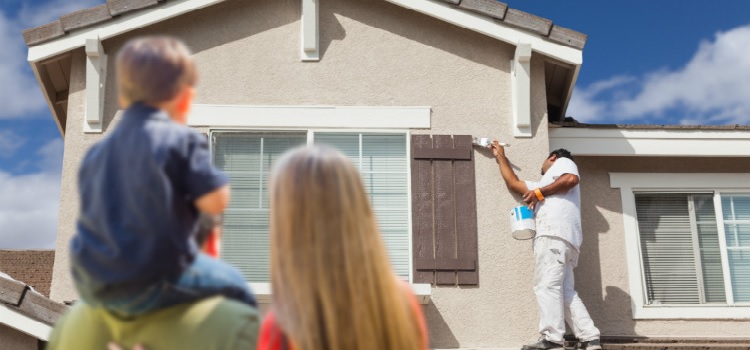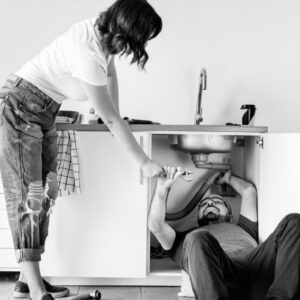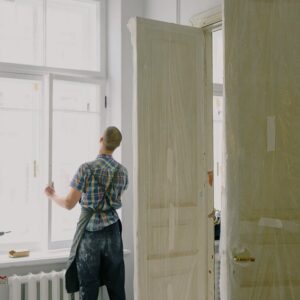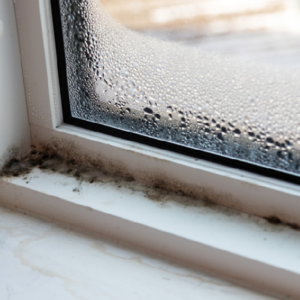Although we all get excited, and the adrenalin starts to flow when we think of home improvements, there are some that should not be performed, or at least given a detailed second thought, prior to implementing the work.
The popularity of home improvement shows, as well as the constant bombardment, by all the DIY ideas, channels, websites, podcasts, etc. have created an environment that almost guilts you into action. In many instances, this is neither smart nor practical, and should be reconsidered prior to advancing on the project.
The decision to launch a new home expansion program, or your decision to perform a certain, alleged home improvement project, must be carefully considered. The economic, as well as “end game” must be clearly and intelligently thought out. Although an item might be old or dated, does not immediately support its replacement or improvement. Some basic examples of areas where specific and detailed consideration should be thoroughly evaluated, are the following.
- Painting existing cabinets. This task is an extremely popular home improvement project, that is presented on almost all the shows and DIY presentations. What could be easier, and more immediately impressive, than to simply paint those dark, unsuitly cabinets, white, beige or even a color?
Consideration must be given to a number of potential issues.
a.) Unless the cabinets are simple pine or spruce cabinets, you will be covering over, cherry, walnut, mahogany, oak or any multitude of additional woods that were used to create your cabinets. Once they are painted, they will never regain their wood appearance.
b.) The presumed simple act of painting the cabinets, must include the labor intensive procedure of ensuring that the paint will adhere to the finish already on the cabinets. If the existing cabinets are stained and sealed, or have a coat of polyurethane applied to their surface, it is imperative that this existing finish be properly prepared for the application of the new finish. This is labor intensive as well as time consuming.
c.) The removal of all hardware is a prerequisite to painting. It is imperative that all hardware be removed from the cabinets, prior to painting. It is almost impossible to adequately and professionally apply a painted surface on cabinets that have hardware installed. Once the hardware is removed, the reinstallation of the hardware should be coordinated to reoccur on the same cabinets that they were removed. The reason for this coordination suggestion is the penetrations for the screws, as well as the alignment of the cabinet doors, depends upon the re-creation of the same hardware on the same cabinets.
d.) The protection of the existing countertops as well as backsplashes will be necessary to ensure that there is no damage to these existing surfaces when the cabinets are being prepared for painting and then painted. It is very important that the existing finishes are not compromised during the cabinet painting operation.
It is highly recommended that prior to your decision to paint, or refinish your existing cabinets, you take the time to understand what you already have. If you have authentic wood cabinets constructed of a valuable wood, then it may be much more practical to simply refinish the cabinets with a clear surface protection, or even simply a good wax. Remember, once you paint the cabinets, there is no going back without substantial work.
- Knock down that wall. Once again, extremely popular and immediately impressive when it is performed on the DIY shows, however, is it really that easy? Although the new contemporary style is to establish large open expanses within the home, the removal of an interior wall is not always that easy, or beneficial to the overall functionality of the space. Even though this is the current thought process, there are a number of specific details that should be considered.
a.) If the wall is a load bearing wall, meaning it supports a load from above, the removal becomes a structural event and not simply a cosmetic event.
b.) Once the wall is removed, the elimination of substantial wall space for furniture placement and privacy is eliminated.
c.) What effect does the wall removal have on the overall heating and cooling of the home. In many instances, the presence of the wall was included in the original calculations for heating and cooling. The removal of this wall may cause a substantial change to the overall scheme of the heating and cooling.
d.) The removal of the wall will result in a void in the floor and ceiling finishes. These finishes will need to be extended through the new opening and should be matched to properly reconstruct the floor and the ceiling.
e.) The loss of the wall will eliminate any electrical outlets that may exist on the present wall surfaces. Will this elimination of outlets cause an insufficiency in complying with the building code for outlet spacing and placement?
- Replace those old fashioned toilet fixtures. I have heard this time and time again regarding old plumbing fixtures, whether they are toilets, sinks, bathtubs, etc. What needs to be addressed, prior to simply replacing toilet fixtures is the following;
a.) Understand that just because a fixture is old, it is not damaged or in need of replacement. In many instances the old fixtures will continue to properly function, especially if the inner workings are replaced and the actual fixture itself remains. Toilet fixtures in many cases are simply cast iron, porcelain or even stone fixtures that are nearly indestructible.
b.) In many cases, the new fixtures are much less quality than the replacement fixtures. Manufacturers are extremely competitive with their products, which makes them reduce the thickness, the quality and the longevity of the older fixtures.
c.) Consider the refinishing of some of the older fixtures. There are several epoxy applications that should be considered, prior to a full replacement of the fixture.
d.) Consider the historic value and the overall quality inflection of the older more reliable fixtures.
It is important to understand that in many instances, the replacements for toilet fixtures are not nearly the quality and integrity of the fixtures that are considered old and replaceable.
- Get rid of that unsightly door hardware. Once again, like the toilet fixtures, the quality and longevity of many of the older hardware is far superior than the current models.
a.) Understand that the replacement of door hardware is extremely difficult to coordinate with the bore locations in the existing doors, as well as the strike locations in the frames.
b.) Matching replacement hardware from a historical period, is almost impossible without exorbitant pricing. There are historical hardware suppliers that stock or can order merchandise that will replace existing hardware, however, you will quickly find that holding a budget with this type of replacement hardware is extremely difficult.
c.) Ambience and historical significance. Although the concept of modern hardware is somewhat alluring, the actual functionality is sometimes disappointing and less than what was anticipated. New is not always better, and this is especially true in door hardware.
- Remove that hardwood floor and replace it. True hardwood floors are almost indestructible. The replacement of a hardwood floor should be carefully considered.
a.) Carefully inspect the existing wood floor for signs of rot or irreparable damage. Unless there has been a substantial water damage or some type of structural failure, the need to replace a wood floor is a rarity. Yes, water will cause deterioration as well as mold, and structural failure of the underlying support structure will cause damage to the floor. Anything else can normally be sanded and refinished without the expense and difficulty in matching and blending of the floor, that an overall replacement floor will entail.
b.) Elevation issues could be encountered if a floor is removed and replaced. In many instances the removal and replacement of a wood floor will result in a threshold requirement or a very difficult transition between old and new.
c.) Overall matching and blending of any new flooring material will not have the same overall wear, bleaching and color or finish condition as the old floor.
- It’s obvious that there is mold all over. This comment is something we hear all the time from frustrated homeowners that associate any amount of mold, with the impression of an overall mold issue.
a.) Just because mold is discovered in one portion of the home is not any reason to assume a much broader mold problem exists. This could be the case, but until the particular mold is evaluated, an overall problem cannot or should not be assumed.
b.) The presence of mold indicates a water leak, or an abundance of moisture build up. This can occur throughout the home, but more likely, in one or two spots that have a moisture issue as a problem.
c.) It is important to understand that mold can be abated, and that in most instances, is not the major disaster that many people initially assume.
- Paint all that natural trim, it’s old fashioned. Yes, this is an old fashioned look, however, it is probably the most maintenance free type of finish that can be applied to woodwork.
a.) The preparation to paint over a stained and polyurethaned finish is extremely difficult, due to the need to ensure that the paint actually sticks to the existing surface application. In general the woodwork surfaces will be very smooth and not porous, resulting in a difficult adhering application of the paint.
b.) Once the trim and woodwork is painted, it will have to be maintained. A painted surface, especially along door edges, window ledges, etc. can be very susceptible to damage and wear. In addition, the normal, everyday use of the home will dirty the woodwork. When it is stained and sealed, it is much easier to clean than the painted surfaces.
c.) The cutting in of the woodwork with the paint can be quite tedious and time consuming. The reapplication of a clear finish is much easier to apply as well as cut into any wall color.
- Cover that wood ceiling, it’s so dated. Please don’t do that! I have to admit that I am very reluctant to cover any type of wood ceiling. The charm and aesthetic features presented by a wood ceiling are hard to find. To cover one up simply because it is thought of as old fashion is a shortsighted decision.
a.) All of the negative issues that had been noted under painting the natural trim are repeated if you were to paint a wood ceiling.
b.) There are several different methods that could be incorporated to modernize this type of ceiling. A pickling of the ceiling by wiping it down with a diluted latex paint of the color of your choosing, would generate a more modern look. The simple application of a different stain or clear finish, would clean the ceiling up and make it look new. The possibility of adding woodwork trim to the ceiling in a creative fashion, would add some creativity to the appearance.
I do not suggest the covering over of the ceiling with sheetrock, unless the ceiling is damaged beyond repair, or simply cannot be refinished due to multiple layers of paint, stain or surface finish.
- Replace those light fixtures, they are so old and unsafe. Again, like the ceiling, old and good is hard to replace, or even find. The older light fixtures, like the older toilet fixtures are, in many instances built stronger and better. To replace many of these old fixtures with equal value fixtures will be unaffordable. If possible, have an electrician rewire the existing fixture to ensure that it is safe and properly wired and grounded, but try not to throw them away, unless they are destroyed beyond repair.
To perform home improvements is a wonderful focus, if they are truly improvements. To change things just to change them in most instances does not make much economical sense.
Although the tendency is to eliminate the old and get into the new, in many cases, especially in older homes, the old has the charm and history that the new will never have!
Author Bio
Peter Arcoma has been in construction for over 40 years. He currently works for Manafort Brother in Planville, CT. You can read more of his construction insights on his personal website here.




